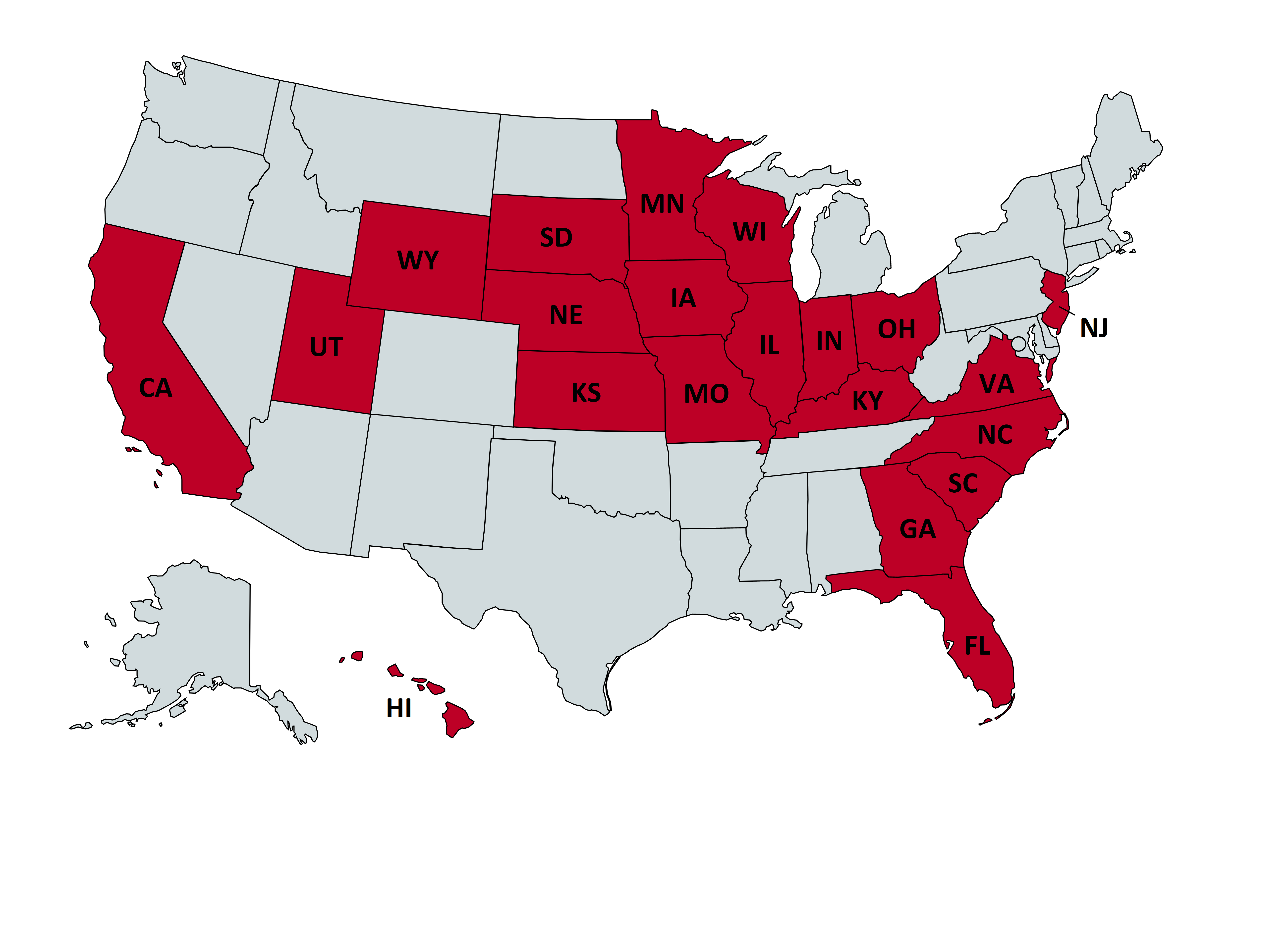In 1991, three states in the Midwest, Nebraska, Kansas, and Missouri, recognized the need for additional research to improve roadside safety and to reduce injuries and fatalities associated with ran-off-road crashes. With this, the concept of a State Department of Transportation, annually-funded, research program was conceived. As a result, the University of Nebraska-Lincoln collaborated with the States of Nebraska, Kansas, and Missouri to form the Midwest States Regional Pooled Fund Program, a program dedicated for sponsoring roadside safety research.
In 1994, the program was joined by the States of Iowa and Minnesota. In 1995 and 1996, the States of South Dakota and Wisconsin jointed the Pooled Fund Program, respectively. In 1997, the state of Ohio joined the Pooled Fund Program with the other seven states. From 2000 to 2005, the Pooled Fund Program continued with support from these eight member states in addition to short-term support from the states of California, Connecticut, Montana, and Texas. In 2005 and 2006, the states of Illinois and Wyoming joined the Pooled Fund Program, respectively. In the 28th year, the Pooled Fund program has eighteen member states, including California, Florida, Illinois, Indiana, Iowa, Kansas, Kentucky, Minnesota, Missouri, Nebraska, New Jersey, Ohio, South Carolina, South Dakota, Utah, Virginia, Wisconsin, and Wyoming.

Largely due to the support from the Midwest States Pooled Fund Program, the Midwest Roadside Safety Facility (MwRSF) has come to be recognized as a global leader in the development of crashworthy safety structures. Numerous safety features have been developed through the Midwest States Pooled Fund Program and have been adopted nationwide with several even adopted internationally. These new safety features have saved the lives of countless motorists across the nation over the last decade.